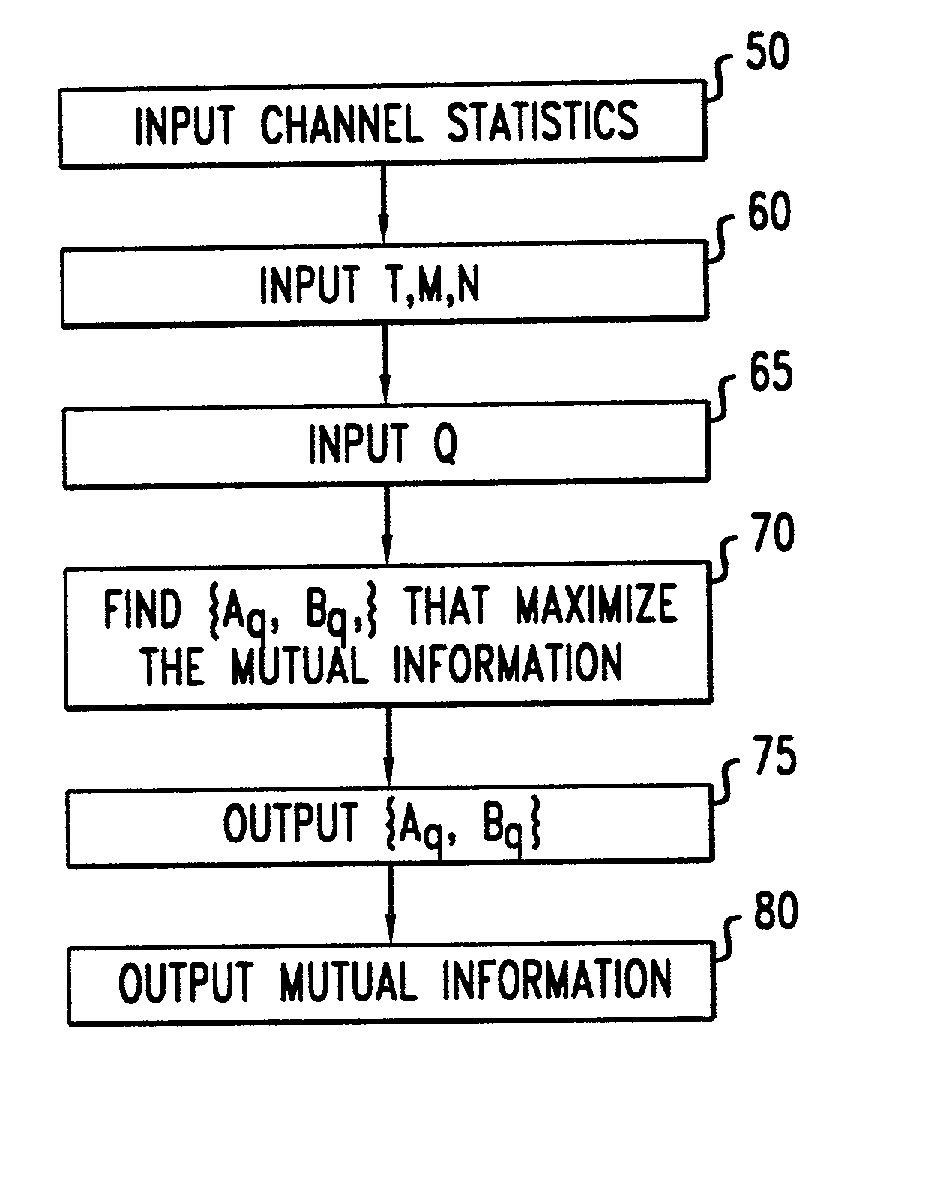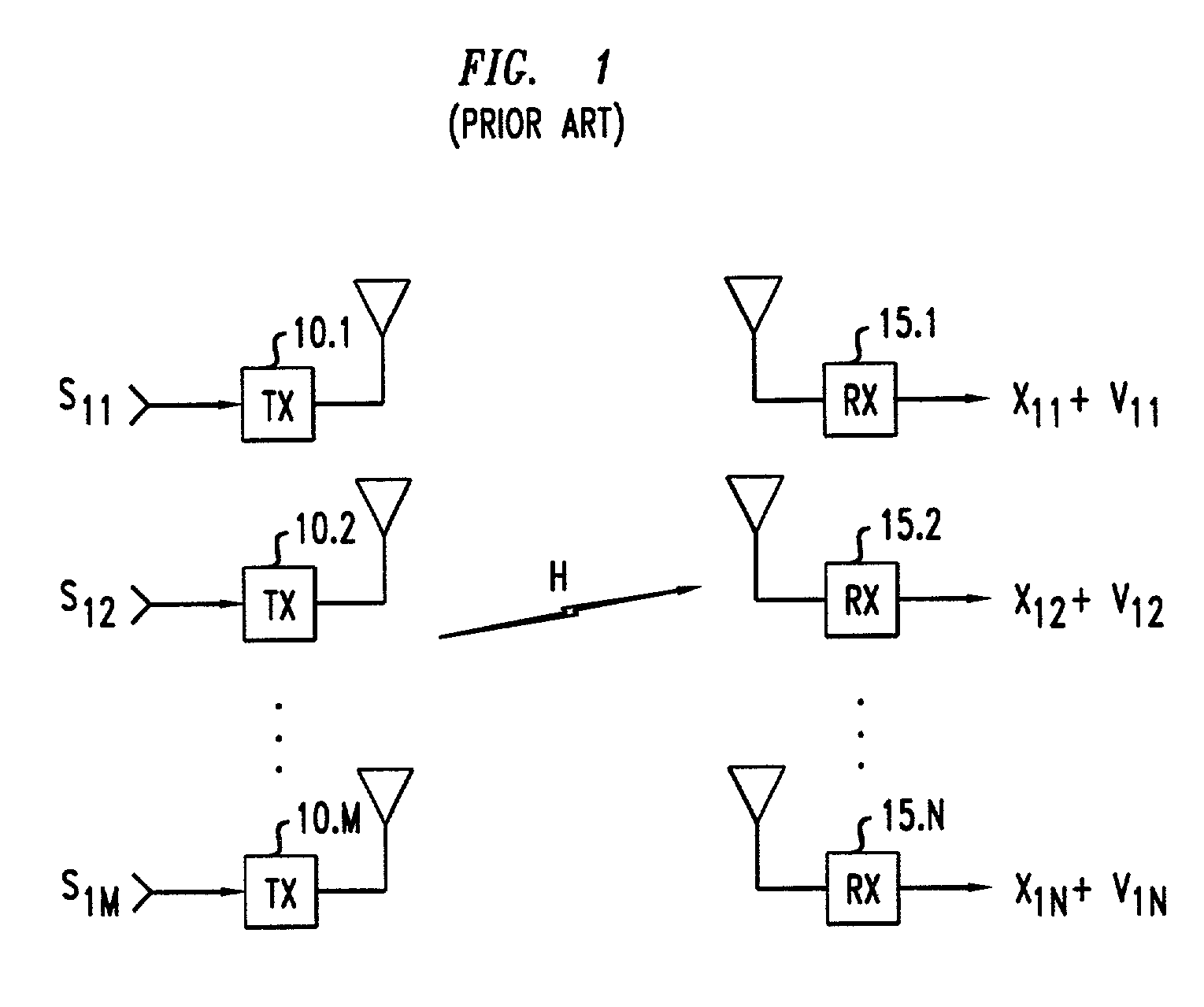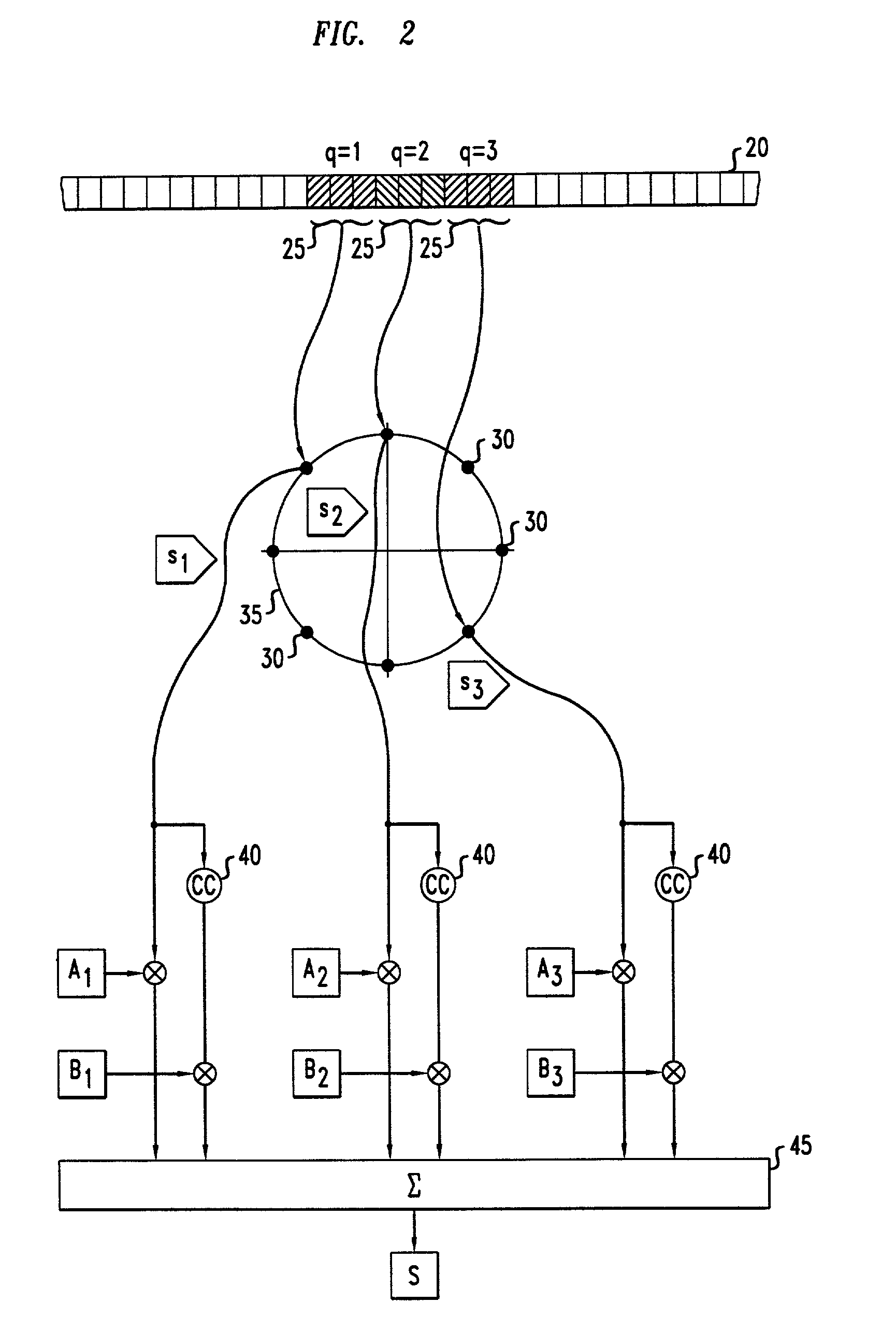Method of multiple-antenna wireless communication using space-time codes
a wireless communication and space-time code technology, applied in the field of wireless communication, can solve the problems of affecting the efficiency of channel capacity, affecting the efficiency of channel utilization, and generally corrupting the reception signal to a greater or lesser exten
- Summary
- Abstract
- Description
- Claims
- Application Information
AI Technical Summary
Problems solved by technology
Method used
Image
Examples
Embodiment Construction
[0075] We will present an orthogonal design of block length T=4 for M=3 transmit antennas, and will then compare the orthogonal design to a linear dispersion code for M=3 transmit antennas and N=1 receive antennas. The orthogonal design is written in terms of {.alpha..sub.q} and {.beta..sub.q} as 18S = 4 3 [ 1 + j 1 2 + j 2 3 + j 3 - 2 + j 2 1 - j 1 0 - 3 + j 3 0 1 - i 1 0 - 3 + j 3 2 - i 2 ] . ( 15 )
[0076] It turns out that this orthogonal design is also an LD code because, as we have found, it is a solution to Eq. (14) for T=4 and Q=3. It achieves a mutual information of 5.13 bits / channel use at .rho.=20 dB, whereas the channel capacity is 6.41 bits / channel use.
[0077] To find a better LD code, we first observe that it is advantageous for Q to obey the constraint Q.ltoreq.NT, with N=1 and T=4. Therefore Q.ltoreq.4, and we choose Q=4. After optimizing (14) using a gradient-based search, we find: 19S = [ 1 + 3 + j [ 2 + 32 + 4 ] 2 - 42 j [ 1 2 + 2 - 3 2 ] 0 - 2 + 42 - j [ 1 2 + 2 - 3...
PUM
 Login to View More
Login to View More Abstract
Description
Claims
Application Information
 Login to View More
Login to View More - R&D
- Intellectual Property
- Life Sciences
- Materials
- Tech Scout
- Unparalleled Data Quality
- Higher Quality Content
- 60% Fewer Hallucinations
Browse by: Latest US Patents, China's latest patents, Technical Efficacy Thesaurus, Application Domain, Technology Topic, Popular Technical Reports.
© 2025 PatSnap. All rights reserved.Legal|Privacy policy|Modern Slavery Act Transparency Statement|Sitemap|About US| Contact US: help@patsnap.com



